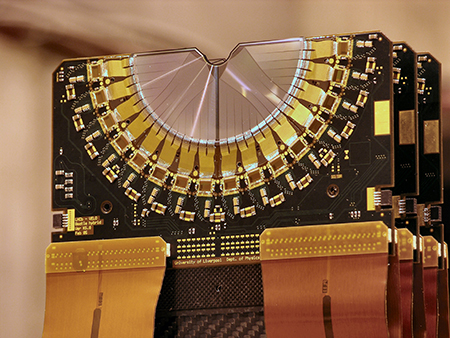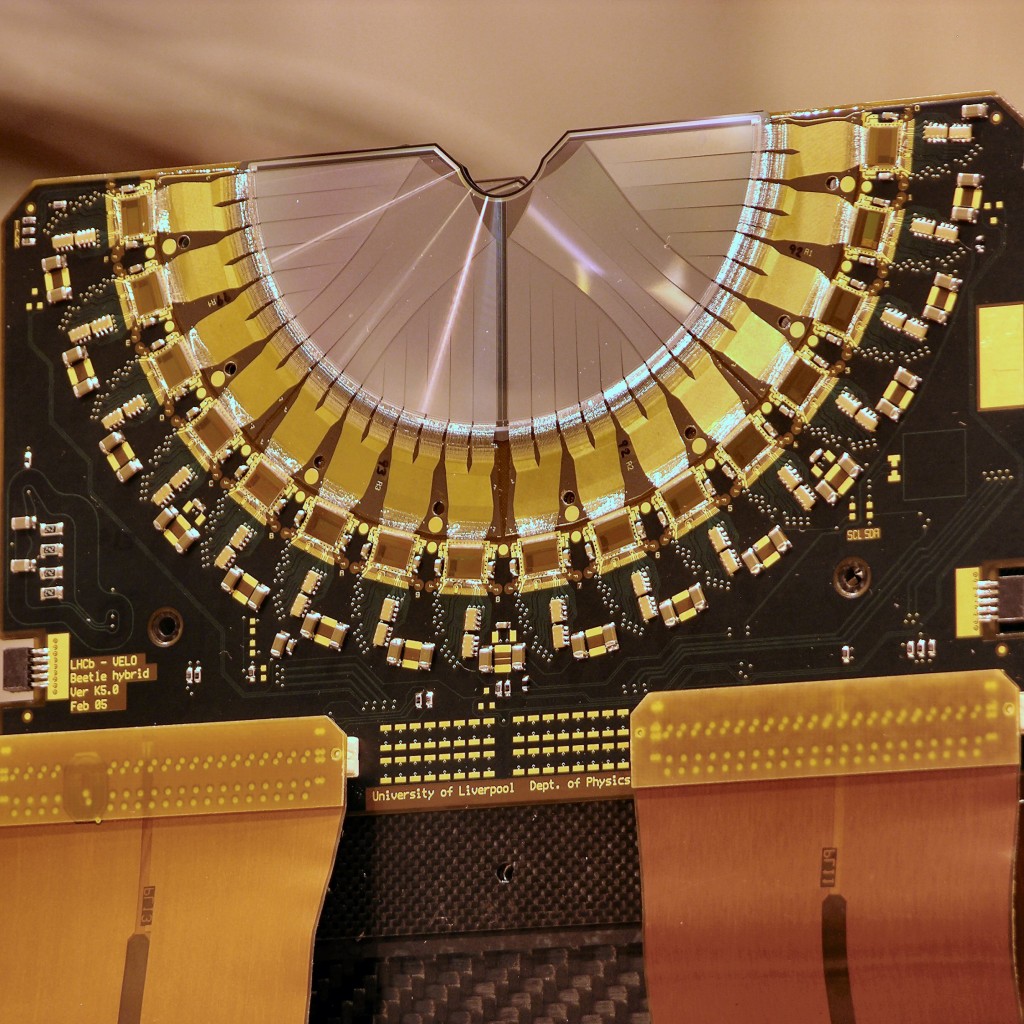Physicists at Liverpool played a significant role in the development of the VErtex LOcator (VELO), a precision silicon detector, at the core of LHCb. The VELO detector consists of 42 separate modules (shown here), which were all assembled at Liverpool
Professor Tara Shears called observation of one of the rarest processes in fundamental physics, announced this morning by CERN, “a fantastic confirmation of the Standard Model of particle physics”.
The LHCb and CMS experiments at the Large Hadron Collider (LHC) made the first definitive observation of a particle called a Bs meson decaying into two muons, confirming a tentative observation made by LHCb last autumn. The discovery has far-reaching implications for the search for new particles and forces of nature, but is yet another blow for those hoping for signs so-called supersymmetry, or SUSY.
We already know that current physics accounts for only about 5% of the matter and energy in the universe. SUSY particles are one candidate for the missing ‘dark matter’ which is expected to make up 25% of the unknown rest
Incomplete theory
Professor Shears, from the University of Liverpool’s Department of Physics, said: “It is one of the most frustrating confirmations we’ve ever had. We know our theory is incomplete, and this ultra-rare decay may give us clues as to what might replace it.
“But what this discovery tells us is that there are no signs yet of our best alternative, a theory called supersymmetry (SUSY). We haven’t ruled out SUSY entirely, but we’ve definitely dismissed many of the most popular versions of it. We know that there must be new physics, but it’s starting to look like this might be stranger than we’d imagined.”
The decay observed at LHCb and CMS is predicted to be extremely rare in the Standard Model, with a Bs meson only decaying into two muons about 3 times in every billion. However, if ideas like SUSY are correct than the chances of the decay can be significantly increased or even suppressed.
Professor Shears said: “It takes an enormous amount of data and hard work to sift out this tiny signal, and an incredibly precise particle detector to allow us to recognise the distinct experimental signature it leaves inside LHCb. Key to this is the VELO silicon detector, which physicists at the University designed and built.
“This detector is capable of resolving distances a fraction of a hair’s breadth in size – a precision which is needed to measure the distinctive flight distance inside LHCb that allows us to identify a Bs meson.”
Neither LHCb nor CMS alone had enough data to announce a formal discovery, but when their results were formally combined the signal passed the all-important “five sigma” level, above which a discovery can be declared.
Not the end of the road for SUSY
This result is certainly not the end of the road for ideas like supersymmetry, which has many different versions, so many in fact that it is almost always possible to contort it so that it agrees with experimental data. However, combined with the recent discovery of the Higgs boson, whose mass is larger than predicted by many SUSY theories, this new result may force SUSY into such baroque configuration that the original motivation – a natural description of nature – is lost.
Professor Shears added: “We’ve used all the data that LHC has delivered to us so far to make this measurement. What’s wonderful, and a very strong result, is that the CMS experiment has also performed the measurement on a completely separate dataset and seen the same thing. It’s a remarkable confirmation.”

